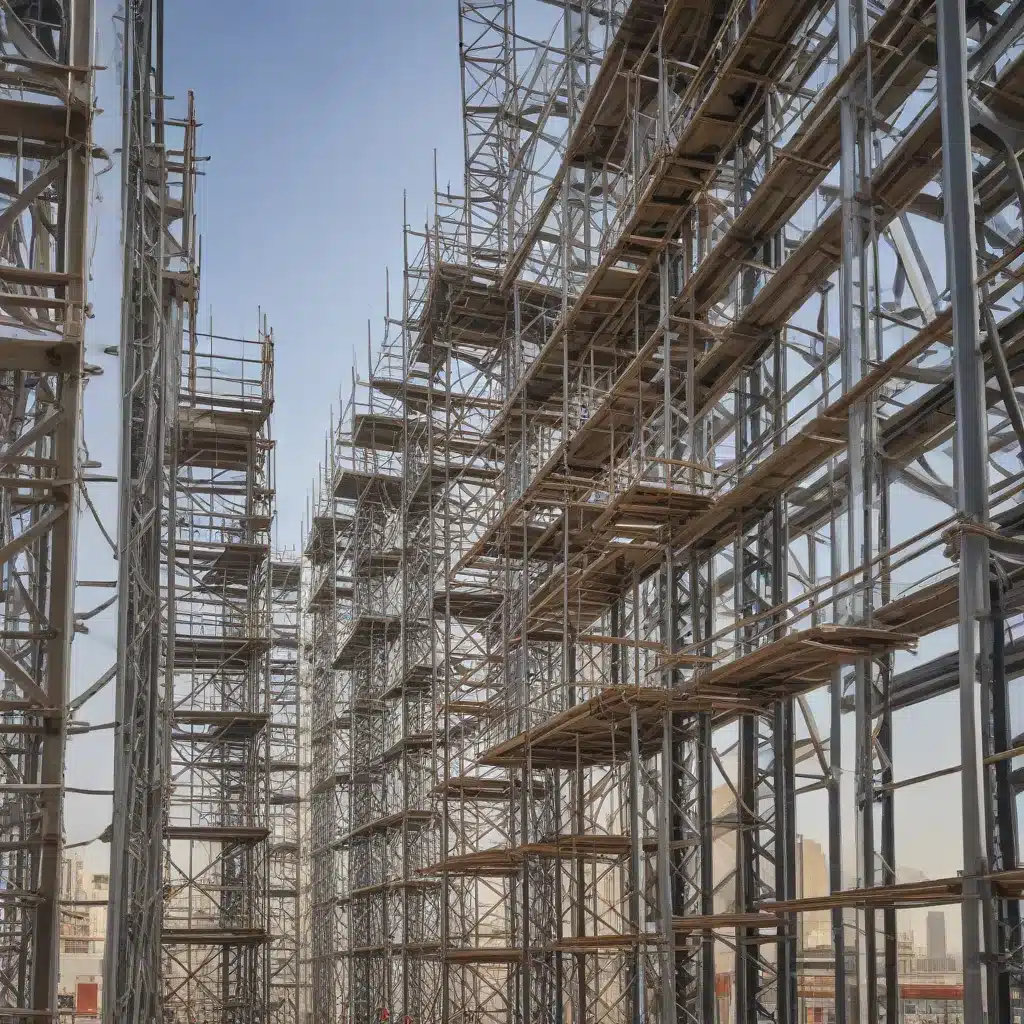
Navigating the UAE’s Scaffolding Landscape: Regulatory Compliance, Cost-Effective Practices, and Innovative Approaches
As the construction industry in the United Arab Emirates (UAE) continues to thrive, the need for reliable and efficient scaffolding solutions has become paramount. Scaffolding plays a crucial role in ensuring the safety of workers, the structural integrity of buildings, and the overall productivity of construction projects. In this comprehensive article, we will explore the latest regulations, best practices, and cost management strategies for scaffolding in the UAE, while also highlighting innovative approaches that can drive sustainability and enhance overall site performance.
Understanding the UAE’s Scaffolding Regulations
The UAE has a robust set of regulations governing the use of scaffolding on construction sites. The Ministry of Human Resources and Emiratisation (MOHRE) oversees the implementation of these regulations, which are designed to protect the safety and well-being of workers.
One of the key requirements is the mandatory use of certified scaffolding equipment that meets international safety standards, such as those set by the International Code Council (ICC). Employers are responsible for ensuring that all scaffolding materials are properly inspected, maintained, and replaced as needed to prevent accidents and injuries.
Scaffolding installation and dismantling must be carried out by trained and competent personnel, who are required to follow strict safety protocols. Additionally, the UAE’s building regulations mandate the use of appropriate fall protection measures, such as guardrails, toe boards, and personal fall arrest systems, to safeguard workers working at height.
Compliance with these regulations is not only a legal requirement but also a critical aspect of maintaining a safe and productive construction site. Failure to adhere to the regulations can result in hefty fines and, in some cases, project delays or even shutdowns.
Optimizing Scaffolding Costs in the UAE
Scaffolding can be a significant cost driver in construction projects, and effective cost management strategies are essential for maintaining profitability. In the UAE, the average cost of scaffolding can range from AED 25 (USD 6.80) to AED 40 (USD 10.90) per square meter, depending on the project’s complexity, the type of scaffolding used, and the duration of the rental period.
One cost-saving approach is to carefully plan and optimize the scaffolding layout to minimize the overall surface area required. By working closely with scaffolding providers and construction managers, project teams can identify opportunities to reduce the number of scaffolding units needed, thereby lowering the overall rental costs.
Another strategy is to consider the use of modular or prefabricated scaffolding systems, which can offer greater efficiency and cost savings compared to traditional scaffolding. These systems often feature standardized components that can be quickly assembled and disassembled, reducing labor costs and minimizing downtime.
In addition, project teams can explore the feasibility of purchasing scaffolding equipment instead of renting, which may be more cost-effective for long-term projects or those requiring specialized configurations. This approach can also provide greater control over the maintenance and deployment of the scaffolding assets.
By carefully evaluating the cost implications of different scaffolding solutions and implementing strategic cost management practices, construction companies in the UAE can enhance their overall project profitability while ensuring compliance with safety regulations.
Innovative Scaffolding Approaches for Enhanced Productivity and Sustainability
As the UAE construction industry continues to evolve, innovative scaffolding solutions are emerging that offer enhanced productivity, improved safety, and increased sustainability. One such solution is the use of construction hoists, which are designed to transport workers, materials, and equipment vertically on construction sites.
The Shera Ahmed Scaffolding company, for example, has introduced the Alimak Scando 650a, a state-of-the-art construction hoist that boasts several key advantages. This hoist is lighter, has a reduced environmental impact, and consumes less electricity compared to its predecessors, making it a more sustainable choice for construction projects.
One of the primary benefits of the Alimak Scando 650a is its ability to drive productivity on construction sites. By efficiently transporting workers, materials, and equipment, the hoist can significantly reduce the time and effort required for vertical access, enabling construction teams to work more efficiently and complete tasks faster.
Moreover, the hoist’s innovative design enhances safety by incorporating advanced features such as improved operator controls, enhanced safety systems, and seamless integration with other site equipment. These features help to minimize the risk of accidents and ensure a safer working environment for all personnel.
In addition to construction hoists, the UAE construction industry is also exploring the use of modular and prefabricated scaffolding systems, which offer greater flexibility, faster installation, and reduced waste. These systems often feature standardized components that can be easily assembled and disassembled, reducing the time and labor required for scaffolding deployment.
Furthermore, the use of digital technologies, such as Building Information Modeling (BIM) and asset management solutions, can help construction companies optimize the planning, deployment, and maintenance of their scaffolding assets. These tools can provide real-time data on the efficiency and performance of the scaffolding systems, enabling construction managers to make informed decisions and implement proactive maintenance strategies.
By embracing these innovative scaffolding solutions and digital technologies, construction companies in the UAE can enhance productivity, improve safety, and contribute to the overall sustainability of their projects, positioning themselves for long-term success in the rapidly evolving construction landscape.
Navigating the Complexities of Scaffolding in the UAE
Effective scaffolding management in the UAE requires a comprehensive understanding of the local regulations, cost considerations, and innovative approaches. By staying up-to-date with the latest industry standards, adopting strategic cost management practices, and exploring the use of advanced scaffolding solutions, construction companies can enhance their project outcomes, ensure worker safety, and promote sustainable construction practices.
As you embark on your next construction project in the UAE, remember to prioritize compliance, cost-effectiveness, and innovation when it comes to your scaffolding needs. By integrating these elements into your project planning and execution, you can unlock greater productivity, safety, and sustainability across your construction sites.
For more information on scaffolding services, construction safety, and building regulations in the UAE, please visit Shera Ahmed Scaffolding, a leading provider of comprehensive scaffolding solutions in the region.
